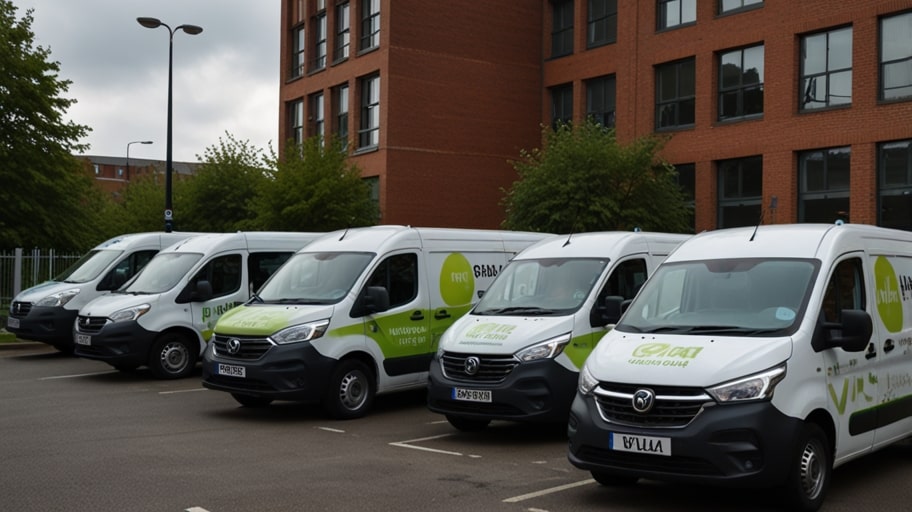
DVLA Driving License Rule Changes June
On June 10, 2025, the DVLA rolled out big changes to driving licences allowing those with a category B (car) licence to drive heavier electric and hydrogen-powered vehicles. This change should hasten the UK to become sustainable transport.
New Rules on Weight Limit
The holder of a Category B licence is now able to drive zero-emission vehicles with a maximum authorised mass (MAM) of 4,250kg instead of 3,500kg. Current restrictions on petrol and diesel vehicles (attributable to 3,500kg) can remain in effect.
Why the Change?
The reformation takes care of the increased weight of electric-based cars and vans since they utilize battery systems. The government aims to promote the use of environment-friendly vehicles by harmonising the regulations to achieve net-zero by 2050.
Effect on Drivers
Access has become easier because drivers will no longer require extra training to drive heavier electric vans. Such a transformation is favourable to delivery owners and businesses investing in electric fleets, with fewer obstacles to this operation.
Industry Response
The move has delighted fleet operators, such as Northgate Vehicle Hire because it believes the move will hasten electrification. Elimination of a five-hour training program saves businesses in terms of expenses and logistics.
The New Rules Apply to Older Drivers
Starting July 2025, medical reporting will become mandatory among drivers who are aged 70 and more. The purpose of enhanced assessment is to make sure the road is safe and older ones keep the right to drive.
Medical Assessment Information
Possible vision and cognitive tests as well as updated health declarations will have to be provided by seniors. The DVLA stresses that such steps are quite safe and fair, but others are afraid of the bureaucracy.
Mixed Reaction of the Public
As environmentalists lauded the electric vehicle rule, other sections of the society have been raising issues surrounding medical checks especially to the seniors. Fear of licences abduction is made evident in social media posts, whereas some embrace reforms geared towards safety.
Environmental Benefits
The increased MAM threshold of the zero-emission vehicles promotes a more environmentally friendly decision. The availability of electric vans may possibly help to minimize emissions in cities to suit clean air movements.
Economic Implications
Companies enjoy seamless fleet changes, yet others have concerns about the expense associated with completing an upgrade to electric cars. The government consents that long-term fuel savings are going to take away early investment.
Rural and Urban Influence
Drivers in rural areas will be less immediately benefited by a charging infrastructure gap since they rely on vehicles to travel further distances. The more open urban areas will be able to employ electric vans more quickly.
Comparisons with Old Rules
Before, under category B drivers required a C1 licence to drive vehicles up to 3,500kg, which involved additional training. With this change occurring in June 2025, this obstruction will only be eliminated using electric and hydrogen vehicles.
Safety Considerations
Safety is the first consideration demanded by the DVLA. Only zero-emission vehicles can use the higher weight limit considering that they mostly come with advanced safety systems, reducing the chances of increased loads.
Infrastructure Challenges
The critics also cite unbalanced charging networks, especially in rural areas. The government has committed to invest more in charging points with 2.3billion being pumped to increase charging points but the rate is slower than the need.
Political Context
These reforms indicate the interest of Labour in green policies, however, senior driver restrictions have been controversial. There is resistance among the opposition members of parliament who claim that the medical fitness tests will victimize the elderly drivers, which can turn political.
Voice of Drivers
Mancheter driver Sarah Jones is glad about the rule of electric vehicle, and she would like to have an electric van to use in her business. In the meantime, retired Tom Harris, 72, is concerned about fresh medical checkups.
Business Opportunities
By changing, van manufacturers also get new opportunities, and more drivers will now be able to drive their models, such as the Ford E-Transit. The interest in leasing electric vehicles is growing in dealerships.
Changes of Rule in the Future
The DVLA suggests even more changes, such as the possibility of digital licences as early as in 2027. At least, at the moment, it is all about helping zero-emission transport and safe driving among senior citizens.
Education of the People
DVLA is introducing awareness campaigns to make the drivers aware of the modifications. The purpose of GOV.UK updates and social media posts are to make clarification on the eligibility and compliance requirements.
Long-Term Vision
These reforms come in line with 2035 ban on new petrol and diesel cars in the UK. The DVLA thinks that by relaxing those restrictions, it can encourage a smoother shift towards a greener future.



 Bitcoin
Bitcoin  Ethereum
Ethereum  Tether
Tether  XRP
XRP  Wrapped SOL
Wrapped SOL  USDC
USDC  TRON
TRON  Lido Staked Ether
Lido Staked Ether  Cardano
Cardano  Avalanche
Avalanche  Toncoin
Toncoin